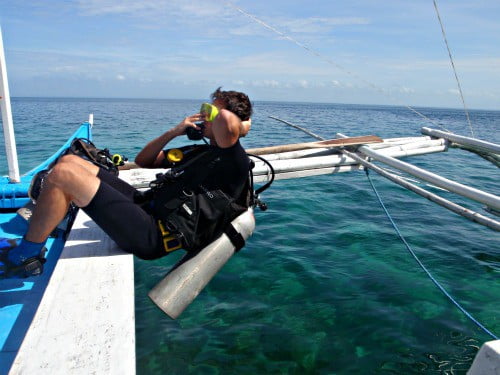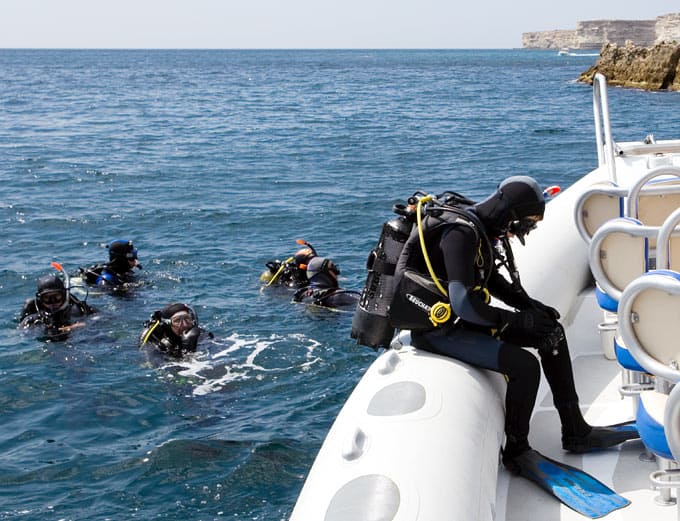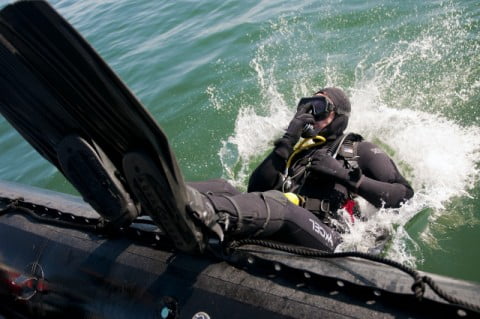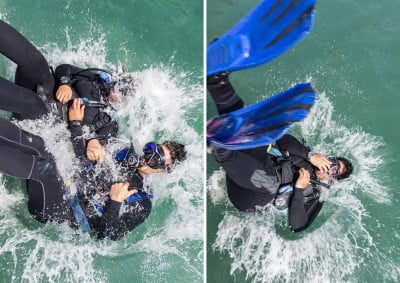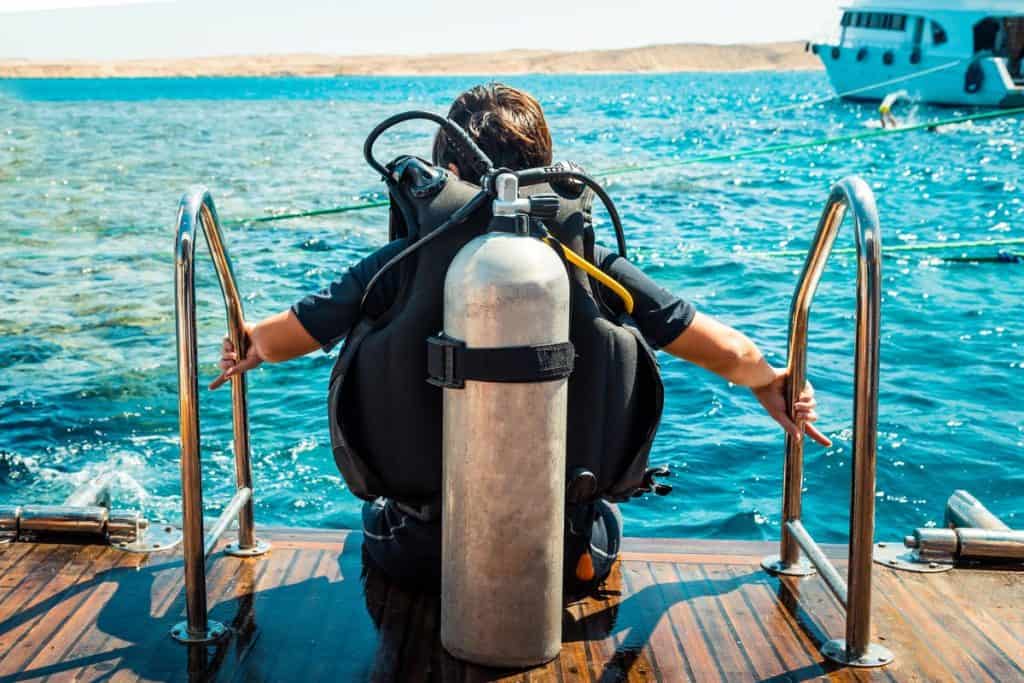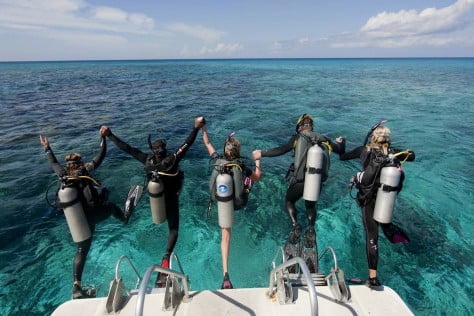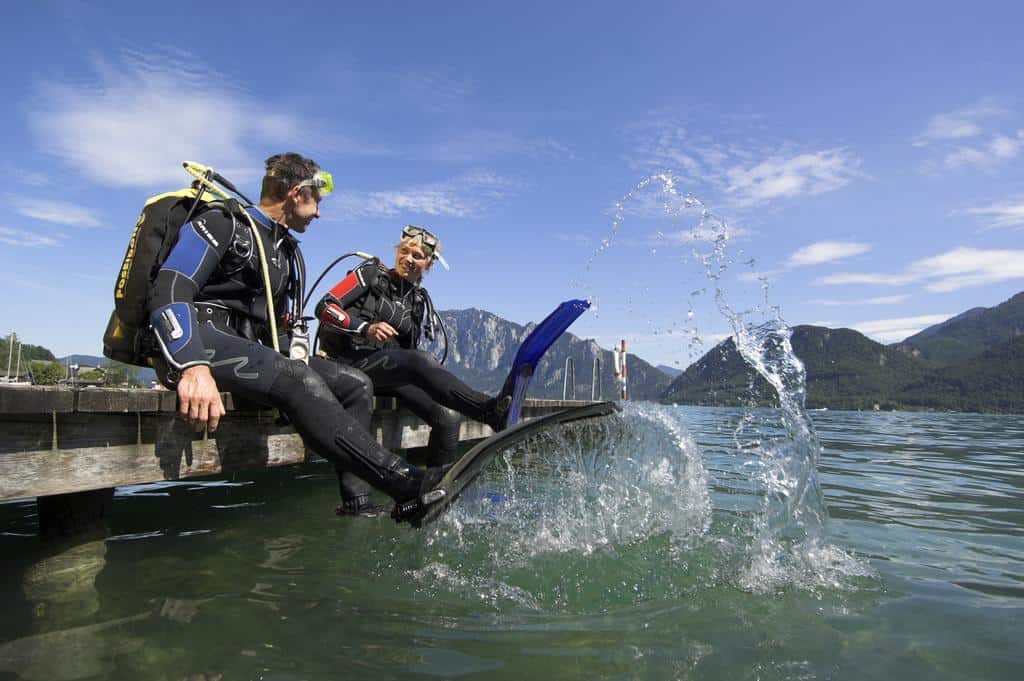All things considered, regardless of whether you are not into diving, you have most likely watched this specific peculiarity of divers.
In spite of swimming where you are going to plunge your body forward, divers do otherwise. They will in general flip their body so their back will be the one that will jump first.
In the event that you jump from a little vessel where you can’t remain because of the absence of room, then rolling in reverse will be the most secure approach to ensure that your veil and controller remain set up and that your hoses don’t hazard stalling out anyplace.
What is Backward Roll?
The retrogressive roll is a particular strategy used to enter the water with all your scuba gear on. While it appears to be simple, it can take some training to completely space this technique. To start with, be certain all your gear is secure and prepared for a plunge.
Next, you’ll place your correct hand on your controller and utilize your fingers to settle your veil. Your left hand commonly holds free hoses next to you. Fold your jaw towards your chest and fall once again into the water.
Fundamentals of the Backward Roll
On the off chance that you are diving from a littler dinghy or unbending hulled inflatable pontoon, then remaining on the external edge of the vessel can make the pontoon rock from side to side and become hazardously uneven.
Sitting on the external side edge of the voyage keeps the pontoon’s focal point of gravity low, and keeps the art from getting lopsided.
Dangers to the Backward Roll entrance?
While the back roll entry is drilled in light of the fact that it’s a protected method of entering the water however there are in every case a few dangers joined to any method of entry since you are wearing incredibly substantial gear on a moderately unsteady vessel all things considered. The primary peril of in reverse roll is hitting somebody when you enter.
Clearly, you can diminish the threats of this by checking the water is clear before you roll, yet there is consistently a remote possibility that something has come in your manner as you enter.
How to do a Backward Roll?
Backroll entry by scuba divers is normally done by sitting on a little pontoon. The time you are prepared to make your entry, you ought to be completely arranged, including everything, for example, your veil, wings, and controller. Guarantee you are wearing your cover and your controller in your mouth.
Ensure your BCD is loaded up with air so you coast when you hit the water in case you’re playing out a typical positive lightness entry.
Your veil should immovably accommodate your face. Presently investigate you to guarantee the territory you’re rolling into is away from individuals and trash.
Spot your left-hand palm over the controller to look at it doesn’t come during entry, and your fingers over your veil to be certain it doesn’t fall off – a few people utilize their correct hand for this current, it’s up to you.
Use your privilege or left hand with which you are allowed to hold and secure some other free hardware you may have, for example, your checks, or a submerged camera.
Take one final speedy look behind you to ensure the territory is still clear. Gradually roll in reverse, letting the heaviness of your body and gear do the vast majority of the work – you don’t should utilize heaps of power to move in reverse.
When you have entered the water, skimmed to the surface, and got your direction, offer the vessel the enormous OK hint with your arm.
Reason why do scuba divers fall backwards
Scuba divers plunge in reverse to guarantee that they don’t break their veils, or break any of their other gear, for example, their controller. Diving in reverse is additionally required on little pontoons, where it’s too little or not steady enough to play out a giant stride.
When heading off to a diving site on a little vessel or even doused an inflatable you will in all likelihood play out a retrogressive roll to enter the water. The principle explanation behind this is the little space and strength of the pontoon.
Attempting to get up with all your overwhelming hardware is extreme enough on an enormous fixed pontoon, let alone on a little vessel that is pushing ahead and in reverse.
You additionally need to consider the safety of your other divers, you are going to remain in a little space with a substantial metal chamber on your back; You can without much of a stretch slaughter somebody, or even fall on them because of poor security.
Safety Concerns:
Diver safety is critical at whatever point you are occupied with a diving. While it may not appear as though it from the start, falling in reverse is an exceptionally sheltered approach to enter the water.
A standard diving chamber weighs around 30 – 35 pounds, so you would prefer truly not to move it and hit you with the rear of the head. This can happen when you hopped in the head.
Likewise, when you enter the water at the back, any submerged impediment will hit the tank rather than your body. Plainly, you should recognize what occurs underneath the surface at whatever point you jump, however in some cases mishaps occur.
In the event that anything turns out badly during the regressive entry, you will have the upside of confronting the water rather than face down. Another significant part of diving safety is a decent jump buoy and banner to be noticeable to you.
Scuba Diving Gear:
Scuba diving gear permits you to venture out to the submerged world to breathe, see and move easily while still under the surface. The gear causes you to get to some degree oceanic by being land-abiding – if just for a brief timeframe.
It has a cover that assists with seeing plainly. The ordinary and tank help to get required air while the highlights let you swim without any problem.
Being a novice scuba diver or an accomplished diver searching for new gear, you will discover helpful hints and recommendations in this area.
Simply make sure to consider three critical things when you pick a gear for example solace, fit, and reasonableness. Yet, you don’t have to renounce great looks so you can make a better than average shading mix.
How deep can scuba divers go after Backward Roll?
Safety gauges aside, the ebb and flow record for the most profound plunge is 1,000 feet, accomplished by Ahmed Gabr in the Red Sea in 2014.
Gabr arrived at this profundity shortly, however it took about 15 hours for him to come back to the surface in staying away from decompression affliction. Decompression affliction happens when gases work in the body of a diver underneath the weight of water profundity.
A diver must rise gradually so as to permit these gases to be securely discharged from the body. In the event that a diver climbs too quickly these gases may shape rises in the tissues of the body, impeding bloodstream and causing mechanical harm in the joints.
This is decompression infection or, as it’s known conversationally in the diving scene, the twists. Decompression infection can bring about musculoskeletal agony, skin rashes, deadness, debilitated cognizance and mental capacity, and other neurological, cardiovascular, lymphatic, pneumonic, and sound-related difficulties.
The chance of decompression affliction increments as the profundity of the jump increments, and divers coming back to the outside of the water must take extraordinary consideration to rise gradually and steadily.
Nitrogen narcosis, or profundity inebriation happens following the delayed inward breath of inactive gases underneath high weight profundities.
Manifestations incorporate disabled awareness, judgment and thinking, and memory. In spite of the fact that these side effects are altogether turned around upon plunge, proceeded with a drop can prompt further mental decay and, at long last, trance-like state.
A diver must be cautious of their physical and mental state consistently during the plunge and rise fittingly if such side effects happen.
Others Entry Techniques when diving into the water
The Seated Entry
For whatever length of time that you have a stage that is near the surface you can sit on the vessel’s edge with your feet completely on the shore.
You would then be able to lift your body to the side with the two arms and afterward twist so you can confront the vessel. This technique is perfect on the off chance that you have constrained space entry or insecure surface.
Essential strides for controlled seated entry:
1. If your boat has a gunwale or a stage that is near the surface, get the entirety of your gear on and sit at the edge of the gunwale with your legs down into the water.
2. Check for space close to the vessel to be certain you not going to arrive on anything conceivably risky and ensure your gear is working appropriately.
3. When doing the controlled seated entry, you are going to lift your body over the edge with the two arms and turn so you are confronting the vessel. The purpose behind doing this is to be certain that the chambers don’t touch the sides.
4. And that is it, you would now be able to jump into the water.
The Giant Stride
At the point when you have a fixed stage on a plunge pontoon, you can remain on the edge of the stage with your wings and hold tight the shore. Keep an eye on your cover and controller for safety.
What’s more, do one last watch that the water is spotless before making a major stride in the water – enough to maintain a strategic distance from incidentally leaving your tank on the pontoon.
Here are the steps while doing the giant stride:
1. First, you need to put on the entirety of your fundamental hardware and gear.
2. You want to swell the BCD(stands for lightness control gadget) midway so you can drift while diving into the water.
3. When checking for everything before you jump, you need to offset yourself either with a rail or another scuba diver. You would prefer not to take a plunge before you are prepared.
4. Before going into the water, you additionally need to check for other divers or risks.
5. After this, you would now be able to jump!
Purposes behind different dive styles
There are three central reasons that a regressive roll is a favored strategy for entering the water. At the point when you decide on a retrogressive roll, you shield these key regions from injury or harm:
- Your body
- Your boat
- Your gear
Hopping into the water recklessly or feet initially can expand the danger of a physical issue. This is genuine whether you’re bouncing from a little vessel or an enormous one.
The effect of a feet-first plunge is difficult for your joints and can cause a physical issue in the event that you don’t hit the water precisely. Also, a heedlessly jump can cause a physical issue from the effect or from free gear.
A regressive roll shields your vessel from unreasonable shaking. Some other jump regularly makes a vessel rock precariously, which could make other divers fall as they’re getting ready to plunge. Your gear could likewise be harmed, especially your veil and blades.
Conclusion
Since you know why scuba divers plunge in reverse, you are as of now mindful of your best course of action. All things considered, on the off chance that you are an intrigued diver, you ought to get familiar with this diving strategy. Along these lines, you will have the option to shield yourself and gears from potential mishaps.
At this point, you should as of now know that divers don’t do back diving for the sake of entertainment. Whenever you are going to plunge, ensure that you attempt this water entry too.
That is it for the time being. On the off chance that you have questions or recommendations, don’t hesitate to drop them in the remark segment underneath.
